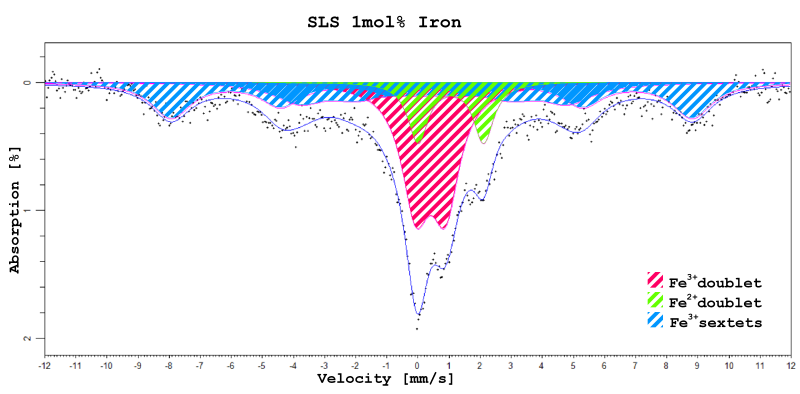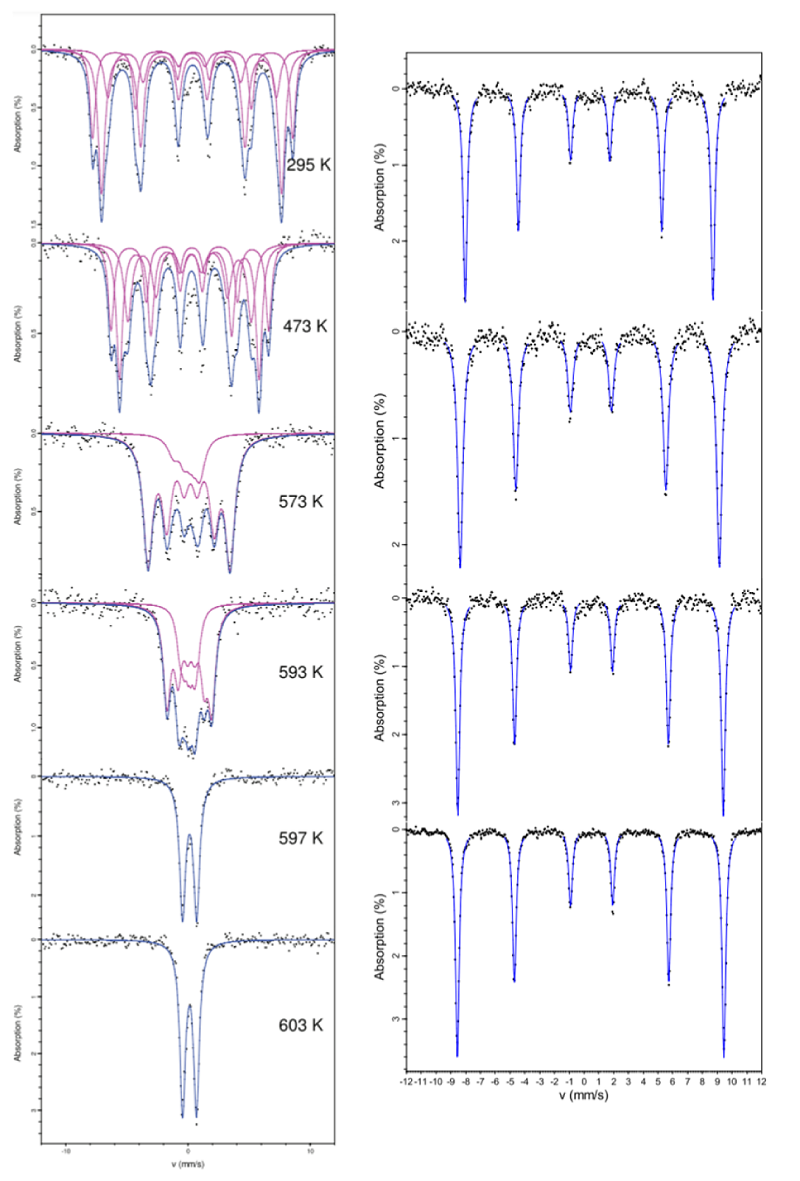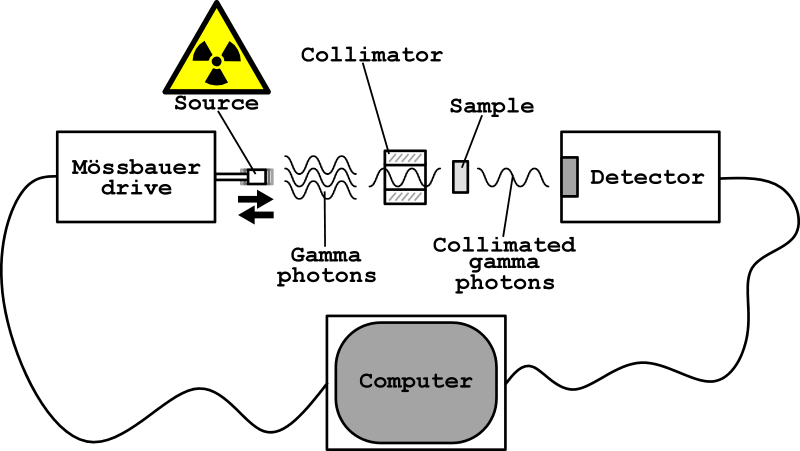Mössbauer Spectroscopy Group
Page Contents:
- Our experts
- Contact us
- Our equipment & capabilities
- Our publications
- Broader research capabilities
- What is Mossbauer spectrocopy?
We are one of the UK’s leading Mössbauer spectroscopy groups, the technique has been utilised at Sheffield Hallam for teaching, research and in collaboration with commercial partners for over 35 years. The group has made valuable links with glass, ceramics, steel, aluminium, nuclear, catalysis and process industries as well as collaborating with many universities.

Group experience
The group has experience in leading and collaborating on Mössbauer spectroscopy research, working on research grants and offering a variety of technical knowledge and services as commercial consultancies to aid cutting edge research and development activities.
Our experts
Professor Paul A. Bingham PhD, BEng(Hons), PGCHE, FSGT:
Professor Paul A. Bingham has over 25 years' experience in his field and has a strong international research and innovation group working primarily in glasses, ceramics, energy and waste management. Paul sits on many external and internal committees and panels; and he contributes to teaching in Materials Engineering.
Contact Paul: Email | 0114 225 6449 | Paul’s Profile
Dr. Alex Scrimshire, Research Fellow:
Dr. Scrimshire joined SHU in 2014 as a post-graduate teaching assistant, contributing to material science, and engineering subjects for undergraduate students. Alex’s PhD focused on Mössbauer spectroscopy of energy storage and catalyst materials and has gained subsequent expertise with glass and ceramic materials in his current role as a postdoctoral research associate.
Contact Alex: Email | Alex’s Profile
Get in touch with the group
Should you need to get in touch with the members of the group for a consultation, quote, research proposal or collaboration please do so at the following email: mossbauer@shu.ac.uk, with a wide range of combined expertise we have the right solution and expertise to get the insight your research needs.

Our equipment and capabilities
The SHU Mössbauer Spectroscopy Group has a variety of capabilities and equipment to ensure that a wide-ranging high-quality research can be conducted. At present the group can conduct 57Fe Mössbauer spectroscopy under a variety of conditions:
- Room temperature: the group has the capability to simultaneously run two spectrometers at room temperature (1024 and 512 channel).
- High temperature: one of the groups two Mössbauer spectrometers is fitted with a Wissel MBF-1100 high temperature stage that can raise the temperature of samples anywhere from 293K to 1273K.
- Low temperature: the group also has the capability to lower the sample temperature using a cold stage down to liquid helium temperatures (10 K) so that the magnetic components can be readily resolved and analysed.
- All of our equipment (brands such as Wissel, Janis, Lakeshore and See Co) is installed and regularly serviced and calibrated by highly experienced personnel to ensure optimal performance.
- Our staff is also trained in the use of the popular Mössbauer spectroscopy fitting software, Recoil and MossWinn.
Examples of our work
Examples of high and low temperature spectra generated by the group can be seen below:

[Figures: (Left) 57Fe Mössbauer spectra recorded from 6H-BaFeO2F at temperatures above ambient temperature, Source: Clemens et. al. 2016. (Right) Fitted Mössbauer Spectra of LaFeO3 perovskite measured at 293, 200, 100 and 10K (top to bottom), Source: Scrimshire et. al. 2018.
Our publications
Our experts are constantly publishing new work, here are some of the most recent pieces of Mössbauer spectroscopy research published by the group:
- Enhanced thermal stability of high-bismuth borate glasses by addition of iron
- Antimicrobial Fe2O3-CuO-P2O5 glasses
- Alternative reductants for foam control during vitrification of high-iron High Level Waste (HLW) feeds
- Crystallization behavior of iron- and boron-containing nepheline (Na2O·Al2O3·2SiO2) based model high-level nuclear waste glasses
- Photo-Fenton degradation of methylene blue using hematite-enriched slag under visible light
- Determination of Debye temperatures and Lamb–Mössbauer factors for LnFeO3 orthoferrite perovskites (Ln = La, Nd, Sm, Eu, Gd)
Broader research
Often when performing Mössbauer spectroscopy research it is vital to marry it up with other investigatory techniques. The SHU Mössbauer Spectroscopy Group is part of the wider Materials and Engineering Research Institute (MERI) which excels at material science research. Any Mössbauer research conducted by the groups experts and by extension those who work and collaborate with us have access to a wide variety of experimental techniques, a full list can be found on the MERI website.
What is Mössbauer spectroscopy?
Mössbauer spectroscopy uses the phenomenon of recoilless emission of doppler shifted gamma photos to scan over the shifted and Zeeman split Mössbauer nucleus. In the case of 57Fe[BPA1] Mössbauer spectroscopy, the natural decay scheme of 57Co is exploited, specifically using the 14.4KeV gamma emission that occurs as the iron nuclei falls to its least energetic state.
In some cases, the source and in other the sample is oscillated at varying speeds to doppler shift the gamma emission or absorption so that it can be used to scan over the minute detail of the electronic environment surrounding the iron within the sample, and this can often shed light on many facets of the electronic configuration of the iron, it can help explain:
- Valence state
- Coordination number
- Symmetry and distortion
- Redox ratio
- Clustering
- Magnetic configuration
The chemical and compositional insight that can be gained from Mössbauer spectroscopy can be invaluable especially since it can reach resolutions able to detect changes in just a few parts in 1011!
Below is a graphical schematic of what a basic Mössbauer spectrometer set up may look like.

